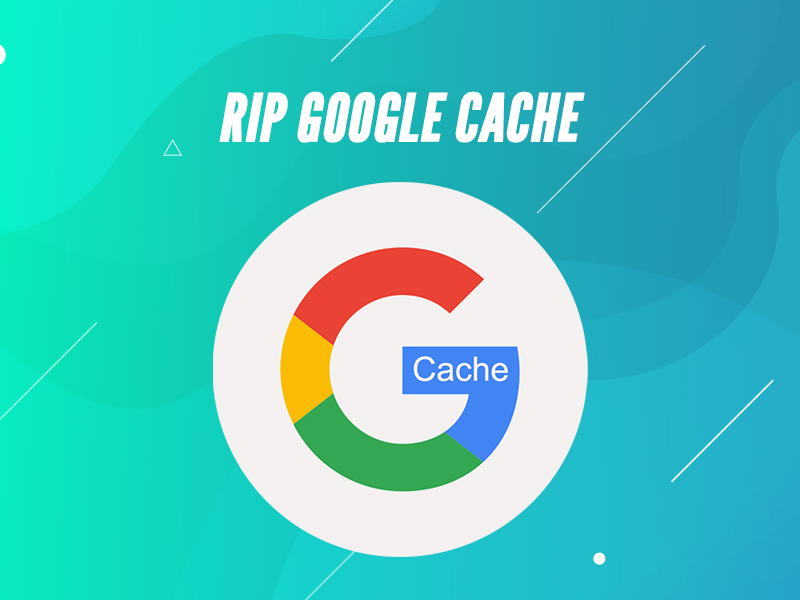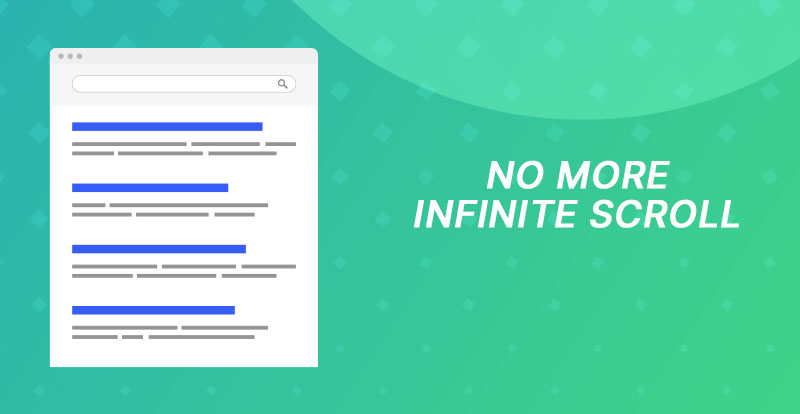The internet is getting older and newer at the same time, whether we like it or not. Even the first website at info.cern is still readily available for anyone who wants a brief history lesson. A major preservation tool has been Google Cache. With Cache, Google preserved unedited or poorly hosted web pages in their archives. They would produce HTML backups of a page at specific intervals, allowing users to view a page that was experiencing downtimes or had been changed, in its original form.
For people accessing sites with frequent connection issues or researchers digging through stories, it’s been a treasured resource. So why is it going away?
Over the last year, Google has phased out its Cache pages. It was once one of the first options a user could click when viewing search results, but that is no longer the case as of January. I used to love scrolling through pages or even using them as references for client. I’ve already shared a short history lesson on SEO, so why not do one about Google Cache?
Now that Google’s cache is going away, let’s review just how important it was and why they made the dumb decision to get rid of it.
What Was Google Cache?
Google Cache was a niche internet archive where you could load pages from all across the internet. Whenever those pages would experience downtimes, or had been altered by their authors or owners, Google’s Cache would maintain the page in its original condition so it could still be viewed that way. When it was initially conceived and released in 1998, it was meant to offer archived pages to users visiting websites that experience downtimes.
Over time, it has been used to track everything from news updates and trends to fact-checking sources that make edits or alterations to their work. To get these archived pages, Google would use “web crawlers” that actively search the web for new or updated content. These scanned pages were unified into one massive database known as Google Cache.
As recently as just a few weeks ago, you could click a Google search result and view its archived pages. Now, that option has been completely removed from any Google search result. So what the heck happened?
Why is Google Killing Cache?
Oftentimes, when big changes are made, a company is secretive and sneaky with their conduct. If you’re expecting a big internal conspiracy about why Google killed one of its oldest features, you’re not going to find one. Sadly, this story is drama-free.
Known as the Google “Search Liason,” Danny Sullivan went on X, the social media app formerly known as Twitter, to explain the reasoning behind the decision.
“Yes, it’s been removed…it was meant for helping people access pages when way back, you often couldn’t depend on a page loading. These days, things have greatly improved, so it was decided to retire it.”~ Danny Sullivan
Reading his tweet, you can tell that he was likely against this decision. He seems to be telling the truth but not the whole truth, which probably includes the fact that Google was paying an exorbitant amount of money to store all of that archived data. By simply flicking that switch off, they’ve saved shareholders a tidy sum and potentially slimmed down a few of their teams or departments.
The Alternative - and the Future of the Internet
Google has changed, there’s no denying that. That doesn’t mean that all is lost for internet historians or fans of niche features. Google was not the only entity creating archived versions of the internet, but it was one of the few. Coral Cache used to be an internet archive available to researchers, a platform where data could be stored and actively shared in real time. Famously, videos were frequently shared using Coral in the early 2000s. That is… until YouTube arrived.
Unfortunately, Coral Cache went offline in 2015, arguably the first sign that Google Cache was not long for the virtual world.
In that very message explaining Cache’s removal, Danny Sullivan highlighted one of the most valuable data resources in the world - the Internet Archive.
Like the National Archives run by the United States government, the Internet Archive seeks to preserve and provide free data resources to anyone needing them. They’re a “digital library” that has millions of free content files for users. Due to copyright issues, the Internet Archive has faced an uphill battle since it was created in 1996, 2 years before Google created Cache.
To this day the #ProtectTheInternetArchive movement lives on, helping to support the non-profit with donations and vocal support. Publishers take issue with their offering free books, music, films, and more but the goal is not to pirate. It’s to share, preserve, and provide access to everyone - from researchers to the general public. For anyone looking to borrow a book from the Internet Archive, you can head to their Open Libary. There, users have access to millions of free books in their very own browser. While the book library is their most expansive, the Internet Archive also has pages for Web, Video, Audio, Software, and Images.
Because of its offerings, the Internet Archive faces consistent and nearly neverending legal issues. If you want to join its mission, see how you can volunteer on its website to help provide free history to a world that needs it.



